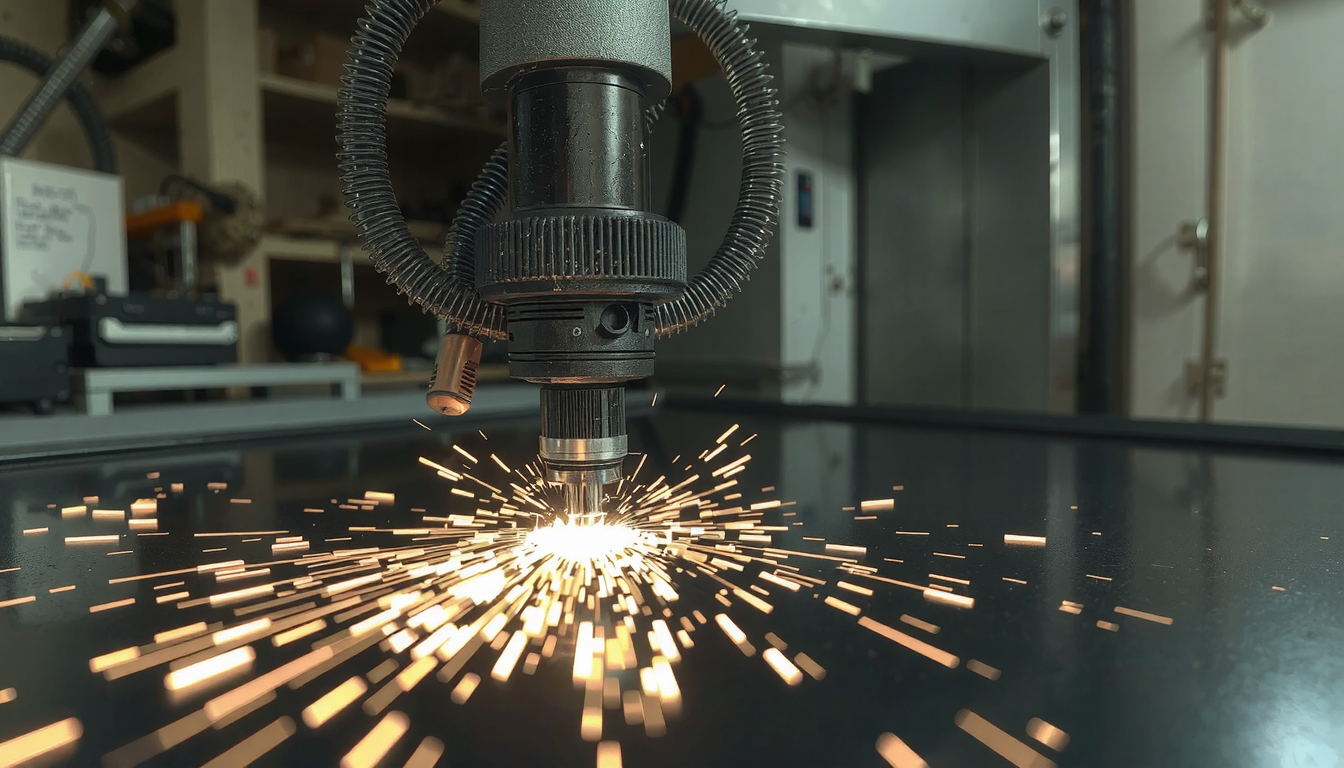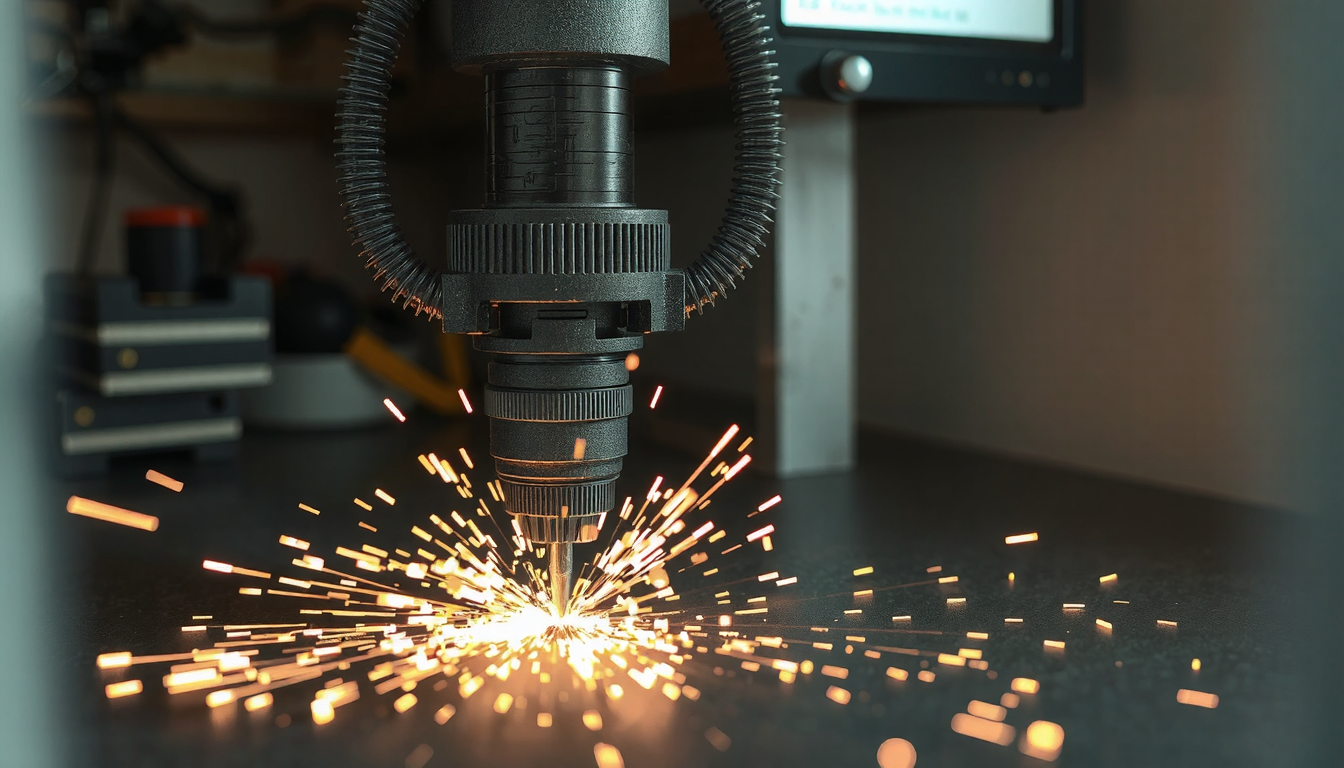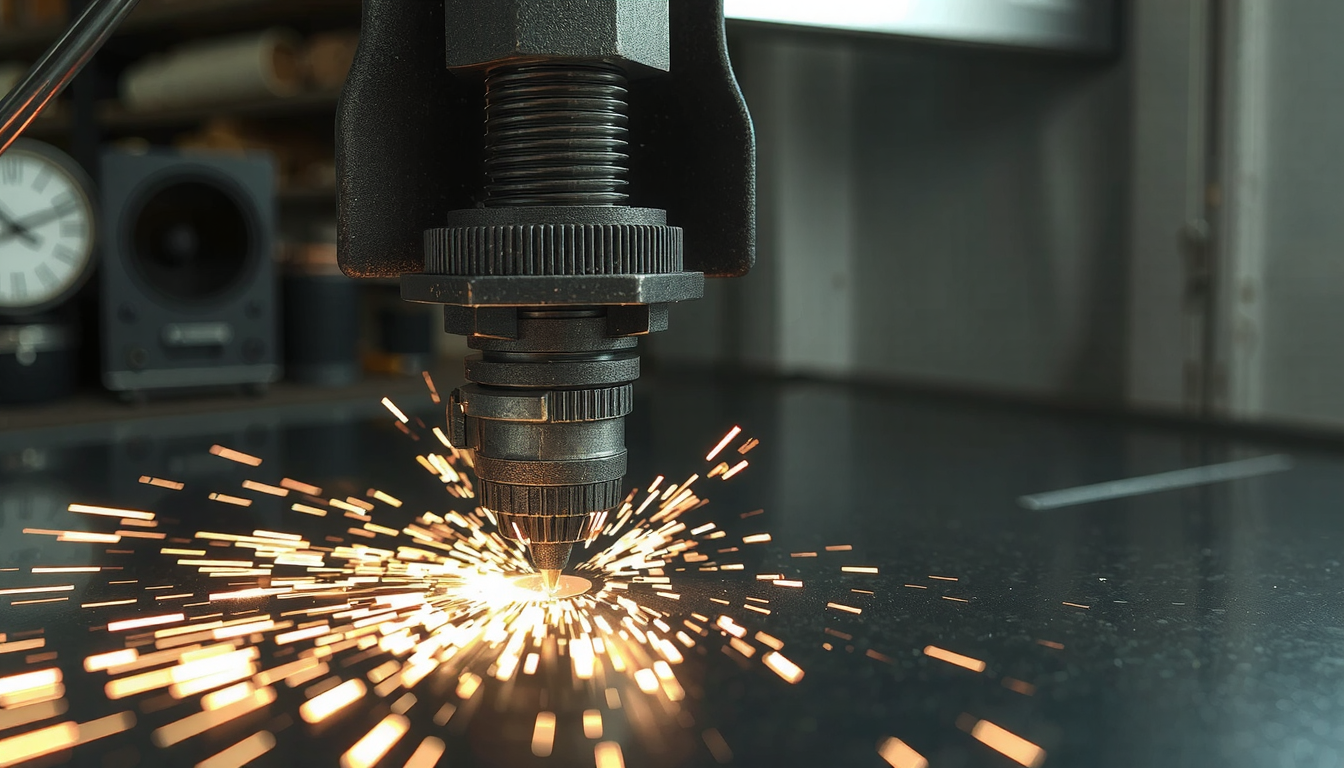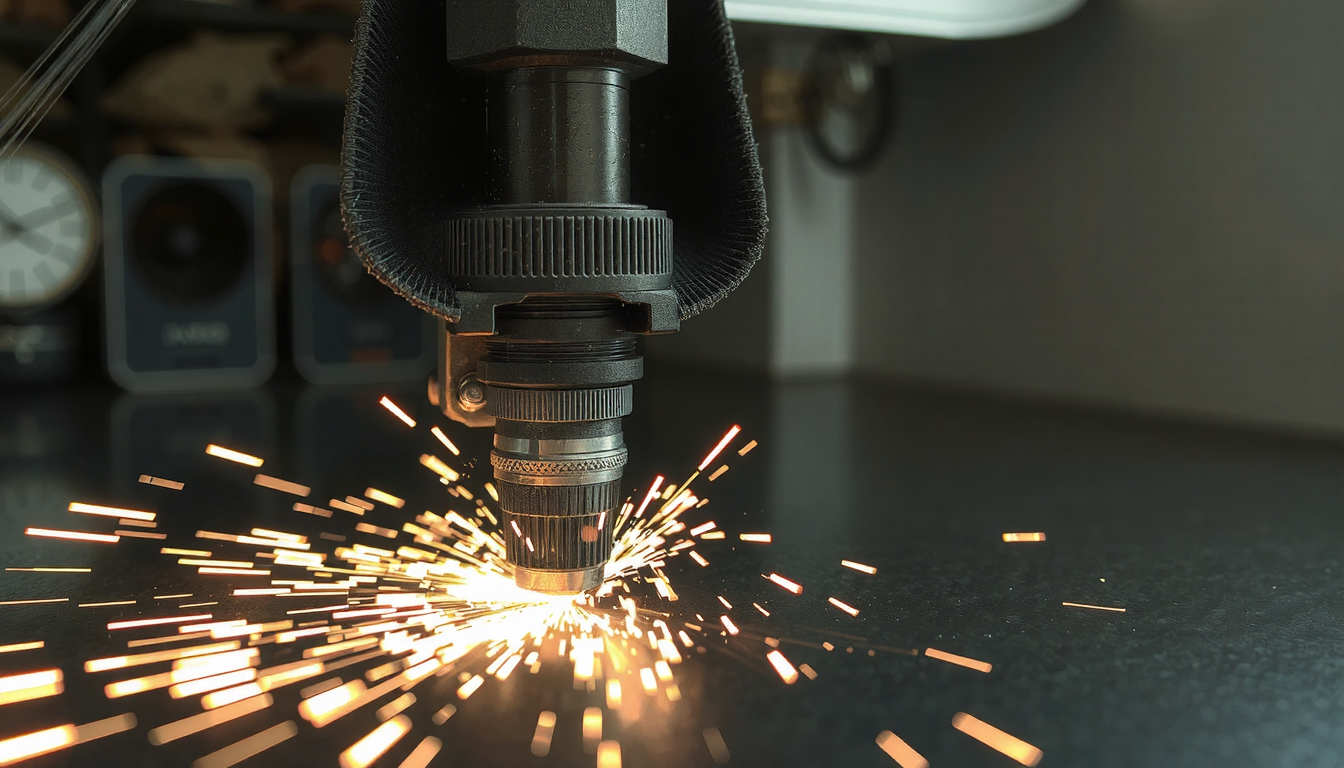Laser cutting is an advanced digital manufacturing that involves leveraging high-precision cutting, etching, or engraving with the help of a very bright, focused, and intense laser beam. The heat from this laser beam evaporates, burns, or melts the material following a precise route.

The technology provides numerous benefits for creative individuals and businesspeople. The knowledge of what is laser cutting enables quick production of parts by introducing the idea of fast prototyping.
- Superior Precision: You can achieve remarkable details and move into the realm of almost invisible cutting lines.
- Material Workflow: Works with diverse materials such as wood, acrylic, metal, and fabric.
- Short Turnaround Time: Produces parts from a digital file directly and fast.
- No-Contact Operation: The laser does not touch the work surface. Therefore, there is less possibility of warping or contamination.
With this manual, you will cover all the essential points related to the elaboration of the laser-cutting process. The machines you are going to learn about are the same as those needed for your own projects.
How Does Laser Cutting Truly Operate? A Detailed Guide
Laser cutting is one of the CNC (Computer Numerical Control) processes. It means the machine is controlled by a computer. It is somewhat like a 3D printer that creates a piece by building it up. Yet laser cutting is an opposite method, a subtractive method. It removes parts to give a final shape to an object.
You can come up with a simple process of turning a digital design into a physical item. The move is provided by an incredible capacity for accuracy. The CAD design is converted to a real component through a process similar to magic, as articulated by the Product Realization Lab of Stanford. Below is a stepwise guide.
-
The Design Phase: At the beginning, the designer makes a 2D vector file. Software systems like Adobe Illustrator or Inkscape are among the most commonly used. Files are typically saved either as .DXF or .AI. This file acts as the blueprint for the laser cutter.
-
The Laser Source: Inside the machine, a high-power laser beam is made. This can happen in a tube filled with CO2 gas. It can also happen through special glass fibers called fiber optics.
-
The Beam Path: A series of mirrors and a special lens guide this laser beam. They direct it and focus it into a tiny, powerful point.
-
The Cutting Head: The focused beam comes out of a nozzle on the cutting head. This head moves over the material. Usually, an airborne stream like air, oxygen, or nitrogen also comes out of the nozzle.

- Enlèvement de matière : The intense heat from the laser spot instantly vaporizes the material, thus creating the cut, which is so thin it is referred to as “kerf.” The assist gas plays its role by blowing away the melted material which results in a clean and smooth edge.
The 3 Main Types of Laser Cutting Machines
Not all laser cutters are the same. The type of laser determines what materials it can cut effectively. Understanding the three main types helps you choose the right technology for your project.
The core difference between them is how the laser light is generated. It’s about its specific wavelength. This affects how different materials absorb the laser’s energy.
Here is a simple comparison of the most common laser cutting machines:
| Laser Type | How It Works | Best For Cutting | Applications courantes |
|---|---|---|---|
| CO2 Lasers | Uses a gas mixture (carbon dioxide) stimulated by electricity. | Wood, acrylic, paper, leather, glass (engraving), some plastics. Not ideal for reflective metals. | Hobbyist machines, architectural models, signage, packaging. |
| Fiber Lasers | Uses a solid-state source amplified through fiber optics. | Metals (steel, aluminum, brass), some plastics. Excellent for thin to medium-thickness metals. | Industrial metal fabrication, automotive parts, electronics. |
| Crystal Lasers (Nd:YAG/Nd:YVO) | Uses a solid crystal as the lasing medium. | Metals, plastics, and some ceramics. Can achieve very high peak power. | Medical device manufacturing, electronics, high-precision marking. |
Beyond the laser type, there are also different laser cutting techniques. For example, fusion cutting uses an inert gas like nitrogen. It simply blows away molten material for a clean edge. Reactive cutting uses oxygen. This creates a chemical reaction that helps cut thicker steel faster.
The selection of laser and cutting process is entirely dependent on the material it is, plus its thickness, speed, and edge quality.
What Materials Can You Laser Cut? (And Which to Avoid)
The laser cutting process is fundamentally multi-material friendly, because of its capability to process manifold materials. However, it is equally important to know which materials are toxic or unsuitable for laser cutting.
This article offers a guide to the common materials compatible with laser cutters. More information can be found in a comprehensive introduction to laser cutting materials.

Métaux
Metals are very common in industrial laser cutting. Fiber lasers are usually the best choice for this.
* Steel & Stainless Steel
* Aluminum
* Brass
* Titanium
Plastiques
Plastics are most suitable for laser cutting. However, some types are a problem.
* Acrylic (also known as Plexiglas or Lucite) is one of the best materials for laser cutting. It produces a beautiful, flame-polished edge.
* Polycarbonate is difficult to cut and can result in discoloration.
* ABS and Delrin (Acetal) can also be cut.
SAFETY WARNING: NEVER CUT PVC
Do not cut Polyvinyl Chloride (PVC), vinyl or any other material containing chlorine. When heated, it releases highly toxic and corrosive chlorine gas. This gas is dangerous to your health, and it will also cause permanent damage to the laser machine.
Woods
Most woods and wood composites are excellent for laser cutting.
* Plywood
* MDF (Medium-Density Fiberboard)
* Solid woods like Balsa, Cherry, and Walnut
* Note: The density, resin, and glue content can affect the cut quality.
Other Materials
The list goes on, making laser cutting a very flexible tool.
* Leather
* Fabric and Textiles
* Paper and Cardboard
* Foam sheets
From Design to Reality: A Laser Cutting Project Walkthrough
Theoretical knowledge is one thing. But observing practice will clarify much. Let’s go through the real-life process of creating a simple custom acrylic keychain. This example demonstrates how quickly an idea can come to a physical product.
Step 1: Creating Your Design
First, we need a digital design. We use software like Adobe Illustrator or the free program Inkscape to draw the keychain shape. For the laser to cut, we draw the outline as a very thin line. This is often called a hairline. We set this line to a specific color, like pure red. This way the machine’s software knows it’s a cut line. If we wanted to add a name or logo, we would create that as a filled shape. The laser will engrave this instead of cutting through.
Step 2: Preparing the File for the Laser
Once the design is ready, we save it in a format the laser cutter can read. Examples include .DXF or .SVG files. It’s important to consider the “kerf.” This is the tiny bit of material the laser beam removes. For a simple keychain, this isn’t a big deal. But if we were making parts that need to fit together perfectly, we would adjust the design. This accounts for this small gap.
Step 3: Machine Setup and Safety
At the machine, we place a sheet of acrylic on the cutting bed. We make sure it lies completely flat. Next, we use a tool to set the correct focus height for the laser. A perfectly focused beam creates the cleanest cut. Before starting, we double-check that the machine’s ventilation system is on. This removes fumes. Safety is always the top priority.

Step 4: The Cut and Final Product
With the file loaded and safety checked, we press start. The laser head quickly and quietly moves across the acrylic. It traces the red cut lines from our design. The focused beam melts the acrylic, leaving a clean, polished edge. In less than a minute, the keychain shape is cut out. The final product is a perfect copy of our digital design. It has a smooth, glossy edge that is a signature benefit of what is laser cutting.
Laser Cutting vs. Other Fabrication Methods: When to Choose What
Laser cutting is a powerful tool. But it is not always the best choice for every project. Knowing its strengths and weaknesses compared to other manufacturing methods helps you make the right decision.
Here is a comparison of laser cutting with other popular technologies.
| Fonctionnalité | Découpe au laser | Usinage CNC | Découpe au jet d'eau | Moulage par injection de plastique |
|---|---|---|---|---|
| Processus | Thermal (Melts/Vaporizes) | Mechanical (Cuts with a tool) | Erosive (High-pressure water) | Molten material injected into a mold |
| Précision | Très élevé | High to Very High | Haut | High (dependent on mold) |
| Meilleur pour | Intricate 2D shapes, engraving, thin-medium sheets | 3D shapes, complex geometries, threading | Heat-sensitive materials, very thick materials | Mass production of identical plastic parts |
| Edge Finish | Clean, often polished (on acrylic) | Tool marks may be visible | Smooth, slightly textured | Smooth, defined by mold finish |
| Heat Affected Zone | Yes (small) | No | No | N/A (whole part is heated) |
Laser Cutting vs. CNC Machining
The main difference is dimension. Laser cutting is best for cutting 2D profiles out of flat sheets. For creating complex 3D parts, parts with threaded holes, or features on multiple sides, China CNC machining services are the clear winner. CNC mills use rotating tools to carve away material from a solid block.
When to Scale Up from Laser Cutting to Injection Molding
Laser cutting is perfect for making one, ten, or even a few hundred custom plastic parts. It is fast and requires no expensive tooling. However, if you need to produce thousands or millions of identical plastic parts, the cost per part becomes much lower with moulage par injection de plastique. This process involves a high initial investment in creating a metal mold. This is a specialized service known as fabrication de moules par injection. But it is unbeatable for high-volume production.
The Future of Laser Cutting and Its Applications
Laser cutting has already initiated a revolution in contemporary manufacturing. The inherent strengths of laser cutting in speed, precision, and material diversity guarantee its long-standing role as a powerful tool.
We see its role growing in many areas. It is used for everything from creating personalized gifts and custom signs. It’s also used for manufacturing critical components for the aerospace and medical industries. The ability to go directly from a digital file to a finished part makes it a key technology. It’s perfect for rapid prototyping and on-demand production.
With technology’s power growing and costs going down, laser cutting will remain a prominent aspect in today’s manufacturing processes. It is a technology that makes it possible for creative individuals, designers, and businesses to bring their visions to life with incredible precision. At Mékalite, we leverage state-of-the-art manufacturing technologies to provide our clients with superior solutions.
Frequently Asked Questions (FAQs) about Laser Cutting
1. How thick of a material can a laser cut?
This depends on the laser’s power and the material type. A hobby-level 40W CO2 laser might cut 6-8mm of acrylic or thin wood. A powerful industrial fiber laser can cut through more than 25mm (1 inch) of steel. There is always a balance between material thickness, cutting speed, and the final edge quality.
2. Is laser cutting expensive?
The cost can vary. Buying a machine can be a large investment. However, using a laser cutting service is often very affordable for single projects, prototypes, and small production runs. Compared to methods that require custom tooling, like injection molding, it has a much lower entry cost for creating custom parts.
3. What is the difference between laser cutting and laser engraving?
Laser cutting uses a high-power, continuous beam to slice completely through a material. Laser engraving uses lower power or fast pulses to remove only the top surface of the material. This creates a visible design or mark without cutting all the way through the part.
4. Does laser cutting leave a smooth edge?
Generally, yes. The high-quality edge finish is a major benefit of what is laser cutting. On a material like acrylic, it leaves a perfectly smooth, flame-polished edge. On metals, it produces a very clean, burr-free edge. This is often better than what other thermal cutting methods can achieve.
5. What file format do I need for laser cutting?
You almost always need a 2D vector file. These files use lines and curves to define shapes, not pixels like a photo. The most common and reliable formats are DXF (Drawing Exchange Format), AI (Adobe Illustrator), and SVG (Scalable Vector Graphics). These files provide the exact paths for the laser to follow.

